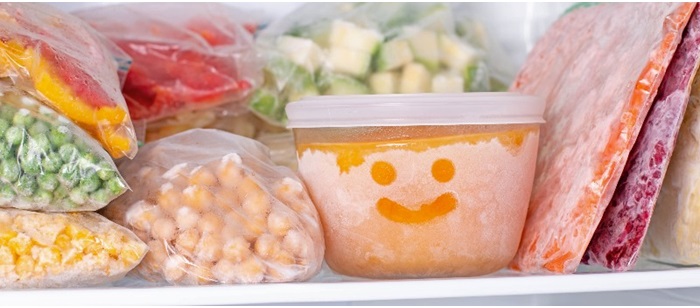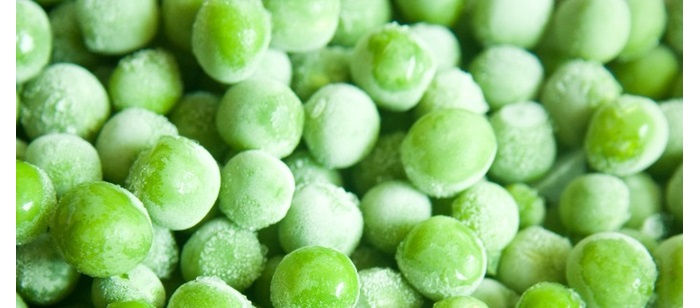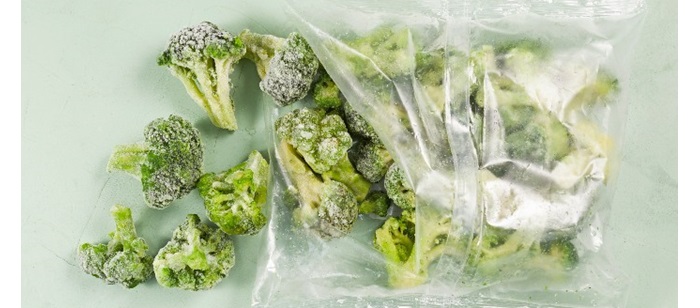Freezer meals can be easy, healthy and cheap!
Let’s face it - cooking every night can get pretty exhausting. Whether you’re swept off your feet with a busy work week, or you’re simply tired of spending your evenings over the stove, making a few easy freezer meals on a budget can make your life so much easier.
We’re here to provide a few super simple freezer meal recipes, and show you how freezer meals can make it even easier to save money on groceries.

What is a freezer meal?
A freezer meal is exactly what it sounds like: a meal you can prepare in advance, freeze and eat later. There are two different types of freezer meal prep, and the kind you choose really depends on what you prefer. Ready-to-heat freezer meals are prepared and cooked in advance. This is also called batch cooking.
At the start of the week, you’ll prepare lots of your favourite dishes, divide them up into individual easy meals to freeze and reheat. Ready-to-cook freezer meals are prepared in advance, but not cooked until needed. You might also call this ingredient prep.
This saves you a lot of time up-front, so you won’t have to spend your weekend doing lots of cooking. Essentially, you’ll freeze prepared ingredients in advance so that during the week, you can just get straight into cooking without faffing around too much with preparation.
Beginner’s tips for getting into freezer meal prep
- Start slow. Just start with one freezer meal, whether that’s a batch-cooked recipe or a ready-to-cook pack. If you like it, try two or three meals the following week.
- Plan for variety. Freezer meals can get pretty boring if you only choose the same few recipes. Especially if you’re batch cooking, you’ll want to have options so you don’t feel tempted by takeout.
- Avoid freezer burn. Freezer burn happens when too much moisture is lost from food before it freezes. You can avoid this by ensuring food is completely cooled before freezing, and storing food in airtight containers.
What are the benefits of freezer meals?
There’s so much to love about freezer meals. Here are just a few of the way freezer meals can make your life easier:
- Freezer meals save you time in the kitchen during the week.
- Freezer meals keep your kitchen cleaner, so not only do you save time cooking, you won’t be spending an hour after dinner cleaning up.
- You’ll know there’s something in the freezer on those days where you can’t muster the will to cook, you’re super busy, or you’re not feeling well.
- It’s easier to resist the temptation of takeaways when you have healthy, delicious homemade frozen meals at hand. This makes it way easier to stick to your budget.
- Frozen meals are just as healthy as freshly cooked meals, as the freezer locks in the same nutrition your ingredients already have.
- Freezer meal prep can save you money, as homemade freezer meals are often cheaper than premade freezer dishes. Plus, you can make them to your taste.
- You can save even more money with freezer meal prep, because it goes hand-in-hand with bulk ingredient buying. Stock up on your favourite ingredients while they’re on sale, prep meals and freeze them for later.
- If you’ve got kids, freezer meals give you more time to spend with your kids, especially during those hours of the evening when they might become restless.
What food is good for freezing?

What ingredients freeze well?
What ingredients don’t freeze well? (And how to make them freeze better)
While these ingredients might not freeze well normally, they can often hold up with a little extra preparation. Many of these can be frozen, but will have significantly different textures when thawed.
If a recipe calls for an ingredient that won’t freeze well, simply leave that ingredient out of the freezer. Store it in your fridge instead, and incorporate the ingredient when heating or cooking the defrosted ingredients.
What makes a good freezable meal?
Most meals can be made into freezer meals, but not all freezer meals are made equal. The whole point of freezer meal prep is that it should be easy and save you time. With that in mind, here’s what we think makes a good freezer meal:
What equipment do you need for freezer meals?

You don’t need any fancy equipment for freezer meals, just a few simple necessities, most of which you can pick up from your nearest PAK’nSAVE. Here’s what you’ll need to stock up your freezer:
- Freezer-safe containers or bags: Snap lock bags are great for the freezer, as they make it easy to squeeze out excess air and ensure you’ve got a nice airtight seal around your ingredients. Plastic containers can work well too, and often stack nicely in the freezer. Better still, both can be washed and reused countless times.
- Foil roasting trays: Pick up some foil trays for pasta bakes, lasagne or mac and cheese if you plan to cook family-sized meals and don’t need to divide them into portions.
- Permanent marker: A marker is essential for labelling your freezer bags. If you can, get a marker that’s specifically designed for the freezer, as this will help to avoid the ink deteriorating in the cold.
- Tape or masking tape: Some tape that you can easily write on, and that will hold ink well, makes labelling your containers and freezer bags easier. Write on the tape, then slap the tape onto your container.
- A freezer: You most likely already have a freezer at home. If you’re getting serious about freezer meals, make sure you have space in your freezer to accommodate a few meals each week. You might like to invest in a separate freezer for the garage, in which case an upright freezer can make it easier to keep things organised compared to a chest freezer.
How to prepare a ready-to-heat freezer meal
Making ready-to-heat freezer meals is extremely easy. In most cases, you can follow your favourite batch cooking recipe, allow it to cool, then divide it into portions to freeze. Cook as many batches as you need to get through the week or month!
There are some exceptions you may encounter based on ingredients that might not freeze well. For example, for a dish like beef stroganoff you won’t want to add your cream or sour cream before freezing. Instead, withhold this ingredient until you thaw the dish. Once thawed, reheat it as you normally would and then stir in your dairy. The same principle applies for a dish like shakshuka. You can cook and freeze your sauce, then thaw and heat it before adding your feta and egg.
In short: withhold ingredients that don’t freeze well, and add them when you reheat the food instead.
How to prepare a ready-to-cook freezer meal
Here are a few simple steps to prepare meals that freeze well, to cook later:
- Chop your ingredients per your recipe. Start with your basic prep. That means chopping everything first, unless it’s a garnish or an ingredient that doesn’t freeze well.
Cook any ingredients that need pre-cooking. Most ingredients can be frozen raw, but cruciferous greens and potatoes especially should be cooked first. Blanch your greens and steam your potatoes for the best results. - Package ingredients appropriately: Your recipe will tell you which ingredients can be cooked together. For example, if a recipe tells you to sauté onions and meat together, place these in a snap lock bag together. Then place your sauce in a separate bag. Once all your ingredients are appropriately bagged, place them all together in a larger bag or container so they’re kept together.
- Remove any air from your freezer bags/containers. Air creates more space for moisture loss and freezer burn.
- Label and freeze. Use tape and a permanent marker to label your freezer meal ingredients. Remember to write the date you prepared the ingredients on, so you know how old they are. Freezer meals will last a long time, but they won’t last forever.
- Defrost and cook. If you’ve individually packaged your ingredients, you can quickly defrost them by placing the bags in the sink, submerged in room temperature water. This should gently but quickly defrost the ingredients over a few hours. Refresh the water every 30 minutes or so, as it will go cold with the frozen ingredients in it. Otherwise, place frozen ingredients in the fridge overnight the night before to defrost.
5 super easy ready-to-cook freezer meal recipes
Ready to get meal prepped?
At PAK’nSAVE, we’re all about spending less time and money on cooking and more on special moments with your family. Focus your energy where it counts, and get prepared to save money with our saving ideas hub.
Or, get super organised with our budget meal planners, designed to suit any household or budget.
Check out these related articles for more cooking & saving tips:
Healthy meal prep ideas for the week
5 Easy Ways to eat healthy on a budget
11 simple food budgeting tips
